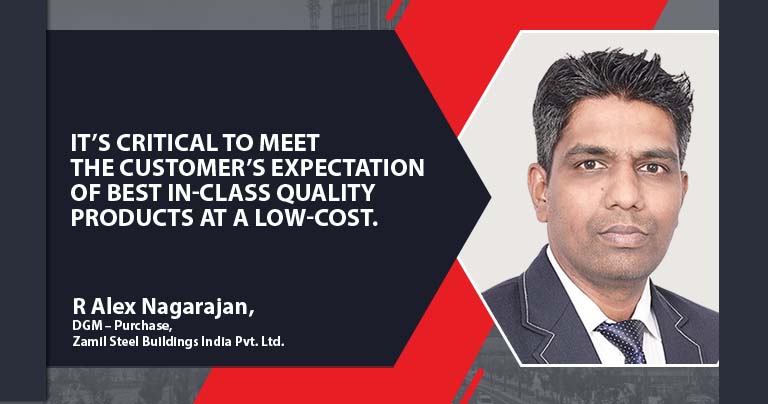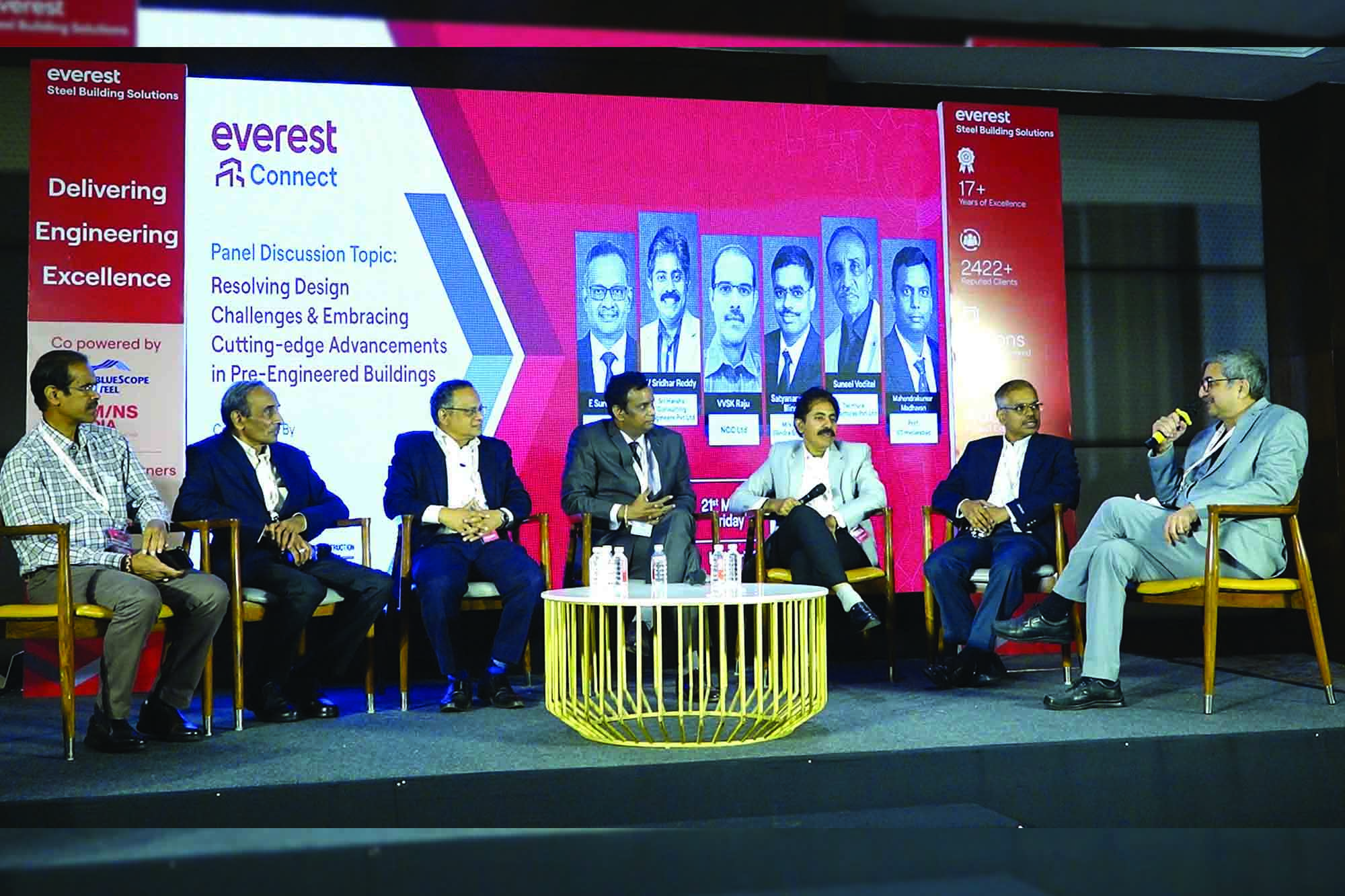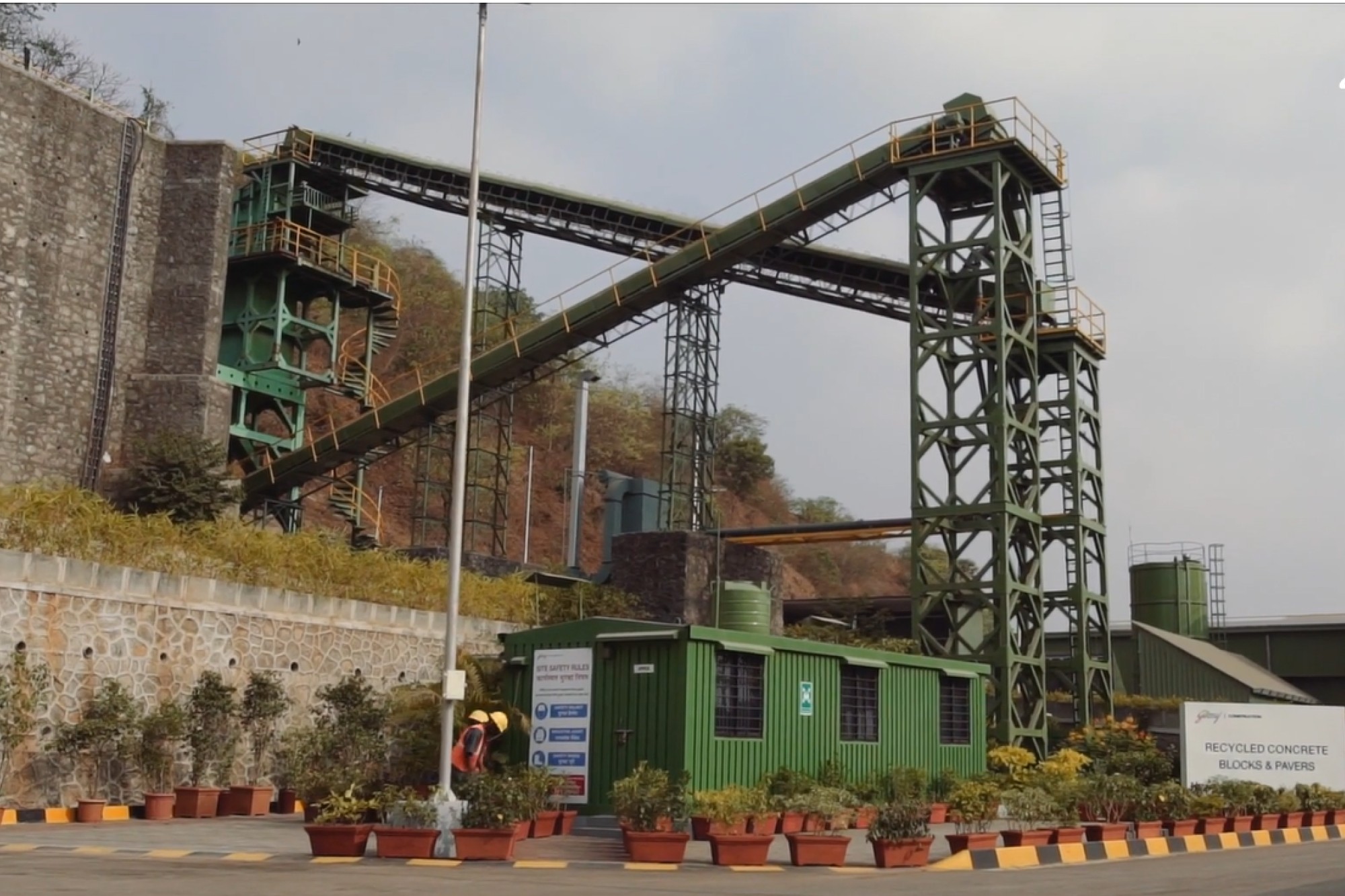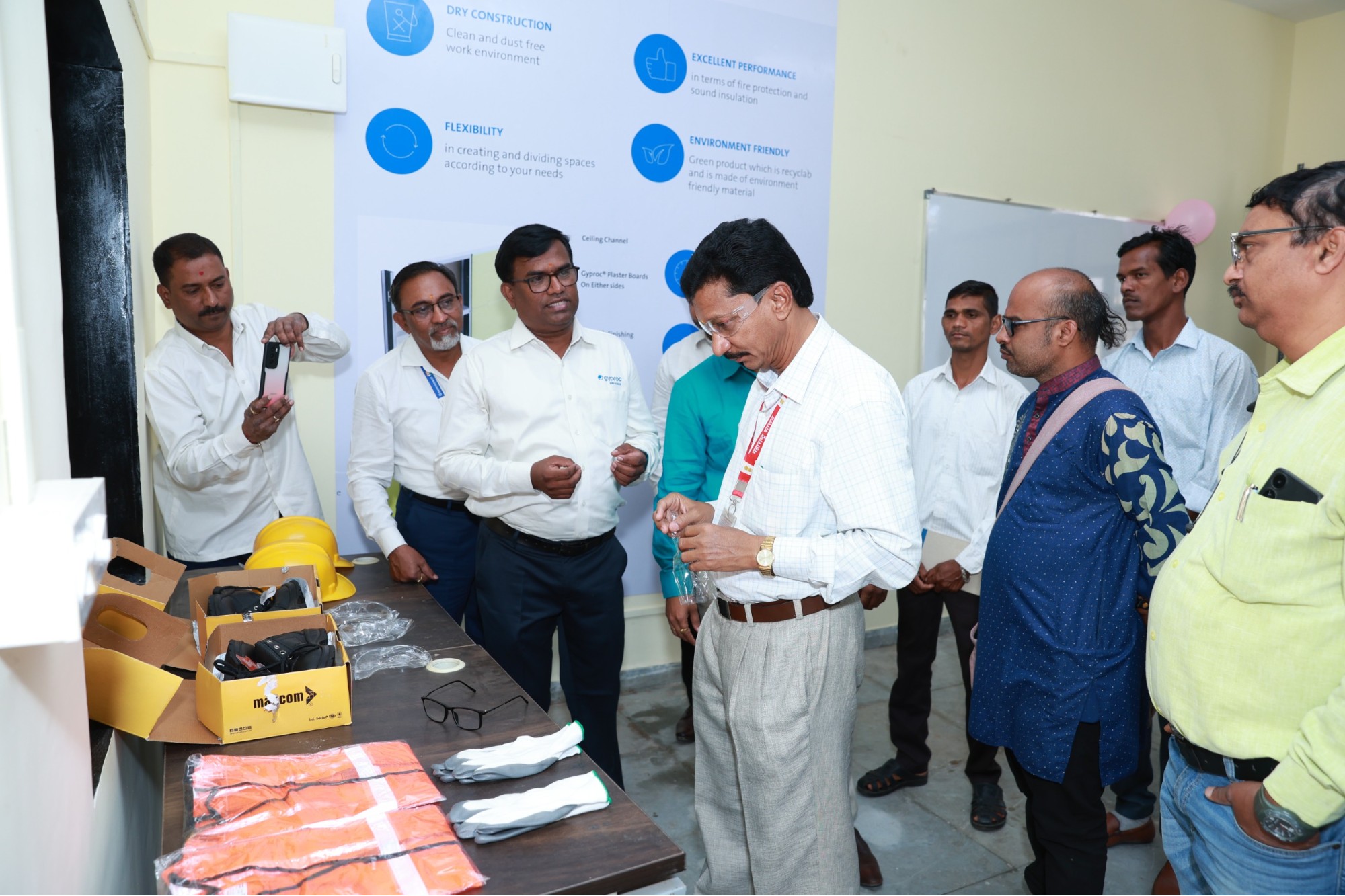Transforming requirements in project procurement – an overview
By Edit Team | January 10, 2022 4:17 pm SHARE

R Alex Nagarajan, DGM – Purchase, Zamil Steel Buildings India Pvt. Ltd., in an interview with B2B Purchase.
Transformations in project procurement and requirement
The basic golden triangle, where we talk about the project’s quality, cost, schedule, and scope, which allows this particular triangle, is project procurement objectives. Recently, we’ve seen a shift in quality, with customers expecting best-in-class quality and services, especially when they’re available at a low cost or at the best-negotiated price. With these objectives in mind, we’d like to establish a scope that we may adjust as needed to meet the project’s needs.
Given the current situation, managing procurement reformation demands without the use of IT services such as software applications, for example, is unquestionably impossible.
Despite the fact that the sector has transformed as a result of digitalisation and other government initiatives, Gati Shakti continues to be the highlight since it altered the entire project landscape as well as the schedule for executing and completing government projects.
When you look at building enterprises in nations like Vietnam, you’ll see that the necessary machinery is readily available on construction sites. India, on the other hand, is more concerned with personnel. If this mindset can change, we will be better prepared for the future and be able to meet worldwide project execution standards.
Meeting client and customer expectation
Another transformation is the level of customer satisfaction. When we talk about customer service satisfaction today, we are referring to an automated information flow to the customer for customer satisfaction and enhanced customer experience.
Zamil Steel has its own information technology division that creates software for all of the company’s business segments in Egypt, Saudi Arabia, and Vietnam.
This software serves as our project information system and as a communication channel for the entire project database. This system keeps track of the timetable from the time an order is placed until it is delivered. When it comes to production monitoring, Zamil is a firm believer in the Tecla EPM production module, which allows customers to view project stages in a variety of ways.
Zamil’s capabilities go beyond production; they also include digitalisation and transportation management systems that allow them to see the entire customer-to-customer interaction as the various parts travel to and from the customer.
The impact of increasing steel prices
The industry will undoubtedly be impacted on a large scale by the ongoing price increases. Strong powerhouses will be able to do better business. Smaller industries, in turn, can address such issues by banding together. When there has been a price correction in steel in the past, the industry has always remained united. The industry is attached to it, and it has come in for a price correction. I’m hoping it’ll be the same this time.
Of course, we encounter a significant amount of resistance on a regular basis, but we must continue to operate. As a result, you must simply close it and proceed. There are no other options, such as dragging things out or hoping for a return to normalcy in prices, which may or may not occur. In some ways, you may be missing out on a tremendous chance during these trying times.
Digitalisation in the project procurement process
If you consider the current situation, the amount of data we analyse should undoubtedly assist us in providing a large number of data analytics, which will, in turn, undoubtedly tell a storey. As a result, users should endeavour to comprehend and collect the complete data set included within the system. Any organisation would surely improve their present process cycles or execution methodologies if they used a data-driven strategy. Many database businesses are entering this industry and are assisting organisations in better controlling the entire process, which they do.
B2C is adopting technology at a faster rate than B2B
To begin with, the growth of B2B technology in terms of companies is really rapid. If you look at the applications that have been produced for numerous firms recently, you will notice that they have significantly increased.
Only a few enterprises have implemented software solutions, primarily for financial restructuring, and it is likely that only basic solutions for GST reporting or mismatch penalty are available.
Many companies today provide end-to-end transportation services, from the availability of empty vehicles in the system to the complete closure of the vehicle payment. Even ready-made transportation software is available in many industries because it produces better results and likely reduces costs.
As a result, all businesses are attempting to follow suit, and we frequently see a large number of businesses seeking subcontractor work. Similarly, even in b2b, many companies are switching in and running the service. There is still much work to be done, but I am optimistic that this B2B service and the software developments will improve it in the coming years.
Cookie Consent
We use cookies to personalize your experience. By continuing to visit this website you agree to our Terms & Conditions, Privacy Policy and Cookie Policy.




















































